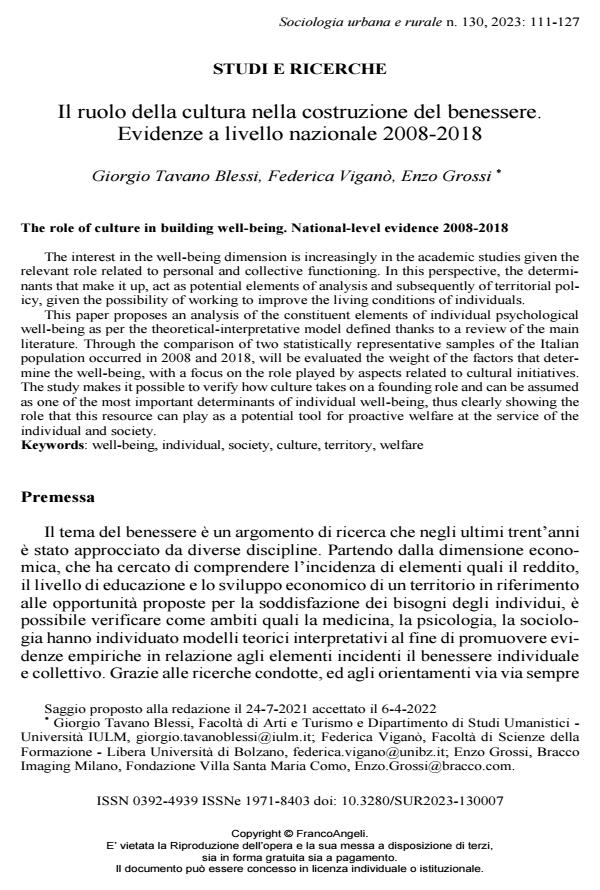The role of culture in building well-being. National-level evidence 2008-2018
Journal title SOCIOLOGIA URBANA E RURALE
Author/s Giorgio Tavano Blessi, Federica Viganò, Enzo Grossi
Publishing Year 2023 Issue 2023/130
Language Italian Pages 17 P. 111-127 File size 327 KB
DOI 10.3280/SUR2023-130007
DOI is like a bar code for intellectual property: to have more infomation
click here
Below, you can see the article first page
If you want to buy this article in PDF format, you can do it, following the instructions to buy download credits

FrancoAngeli is member of Publishers International Linking Association, Inc (PILA), a not-for-profit association which run the CrossRef service enabling links to and from online scholarly content.
The interest in the well-being dimension is increasingly in the academic studies given the relevant role related to personal and collective functioning. In this perspective, the determinants that make it up, act as potential elements of analysis and subsequently of territorial policy, giv-en the possibility of working to improve the living conditions of individuals. This paper proposes an analysis of the constituent elements of individual psychological well-being as per the theoretical-interpretative model defined thanks to a review of the main literature. Through the comparison of two statistically representative samples of the Italian population occurred in 2008 and 2018, will be evaluated the weight of the factors that deter-mine the well-being, with a focus on the role played by aspects related to cultural initiatives. The study makes it possible to verify how culture takes on a founding role and can be as-sumed as one of the most important determinants of individual well-being, thus clearly show-ing the role that this resource can play as a potential tool for proactive welfare at the service of the individual and society.
Keywords: well-being, individual, society, culture, territory, welfare
Giorgio Tavano Blessi, Federica Viganò, Enzo Grossi, Il ruolo della cultura nella costruzione del benessere. Evidenze a livello nazionale 2008-2018 in "SOCIOLOGIA URBANA E RURALE" 130/2023, pp 111-127, DOI: 10.3280/SUR2023-130007